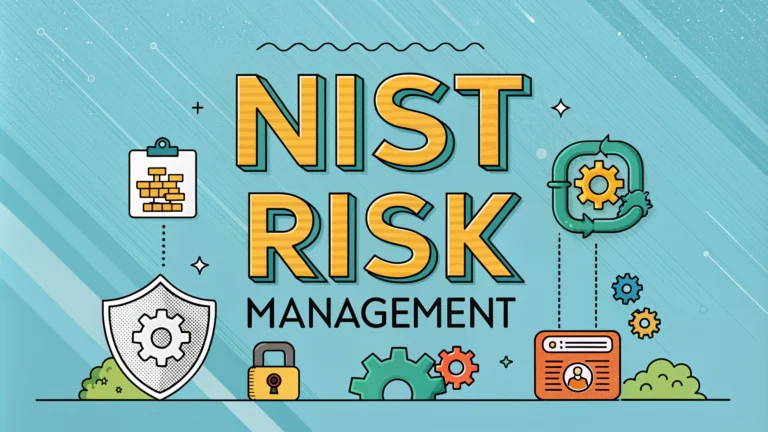Risk assessment frameworks provide structured methods to identify, analyze, and manage security vulnerabilities during penetration testing engagements.
Security professionals use these frameworks to maintain consistency and thoroughness when evaluating an organization’s security posture.
Selecting the right framework helps establish clear objectives, methodologies, and reporting standards for penetration testing projects.
Common Risk Assessment Frameworks
- NIST SP 800-30 – Framework developed by the National Institute of Standards and Technology focusing on risk assessment processes
- OSSTMM – Open Source Security Testing Methodology Manual provides metrics for security testing
- OWASP – Open Web Application Security Project framework specifically designed for web application testing
- PTES – Penetration Testing Execution Standard defines seven phases of penetration testing
Key Components of Risk Assessment
- Asset Identification
- Threat Analysis
- Vulnerability Assessment
- Risk Calculation
- Control Implementation
Risk Scoring Methods
| Method | Description |
|---|---|
| CVSS | Common Vulnerability Scoring System (0-10 scale) |
| DREAD | Damage, Reproducibility, Exploitability, Affected users, Discoverability |
| Risk Matrix | Probability vs Impact assessment |
Implementation Steps
- Planning Phase
- Define scope and objectives
- Select appropriate framework
- Establish timeline and resources
- Assessment Phase
- Gather information
- Identify vulnerabilities
- Analyze potential impacts
- Documentation Phase
- Record findings
- Calculate risk scores
- Prepare recommendations
Tools and Resources
- Risk Assessment Tools
- Nessus Professional
- OpenVAS
- Qualys
- Documentation Tools
- PlexTrac
- DefectDojo
- Dradis
Best Practices for Risk Assessment
- Update frameworks regularly to address new threats
- Maintain detailed documentation throughout the assessment process
- Use standardized scoring methods for consistency
- Involve stakeholders from different departments
- Regularly validate and update risk assessments
Moving Forward with Risk Management
Contact certified security professionals or organizations like ISACA (www.isaca.org) or ISC² (www.isc2.org) for guidance on implementing risk assessment frameworks.
Regular updates and reviews of your risk assessment process ensure continued effectiveness and relevance to your security program.
Consider joining professional security communities and forums to stay informed about emerging threats and framework updates.
Advanced Risk Assessment Considerations
- Integration with existing security programs
- Compliance requirements alignment
- Continuous monitoring strategies
- Incident response planning
- Business impact analysis
Framework Integration Strategies
Technical Integration
- API connectivity between tools
- Automated reporting systems
- Real-time monitoring dashboards
Process Integration
- Workflow automation
- Change management procedures
- Escalation protocols
Measuring Assessment Effectiveness
| Metric | Purpose |
|---|---|
| Time to Detection | Measures how quickly threats are identified |
| Resolution Rate | Tracks vulnerability remediation efficiency |
| Coverage Score | Evaluates assessment completeness |
Building Resilient Security Programs
Implementing comprehensive risk assessment frameworks strengthens overall security posture and enables organizations to adapt to evolving threats effectively.
Success depends on combining the right frameworks, tools, and methodologies with regular updates and stakeholder engagement.
Organizations should focus on creating sustainable, scalable assessment processes that grow with their security needs and technological advancement.
FAQs
- What is a risk assessment framework in penetration testing?
A risk assessment framework is a structured methodology used to identify, analyze, and evaluate potential security vulnerabilities and threats in an organization’s IT infrastructure, helping prioritize security measures based on potential impact and likelihood of exploitation. - Which are the most commonly used risk assessment frameworks in penetration testing?
The most widely used frameworks include NIST SP 800-30, OSSTMM (Open Source Security Testing Methodology Manual), OWASP Risk Rating Methodology, and FAIR (Factor Analysis of Information Risk). - How does the CVSS (Common Vulnerability Scoring System) integrate with risk assessment frameworks?
CVSS provides a standardized scoring system (0-10) to assess vulnerability severity, which risk assessment frameworks use to quantify and prioritize security risks based on metrics like attack complexity, required privileges, and potential impact. - What are the key components of a risk assessment framework?
Key components include threat identification, vulnerability assessment, impact analysis, likelihood determination, risk calculation, control recommendations, and risk monitoring mechanisms. - How often should organizations conduct risk assessments using these frameworks?
Organizations should conduct comprehensive risk assessments at least annually, with additional assessments following significant system changes, new threat intelligence, or security incidents. - What is the difference between qualitative and quantitative risk assessment in penetration testing?
Qualitative assessment uses descriptive terms (high, medium, low) to evaluate risks, while quantitative assessment assigns numerical values and statistical analysis to measure potential losses and probability of occurrence. - How do risk assessment frameworks handle compliance requirements?
Frameworks incorporate regulatory compliance requirements (like GDPR, HIPAA, PCI DSS) by mapping security controls and assessment criteria to specific compliance standards, ensuring both security and regulatory obligations are met. - What role do threat intelligence feeds play in risk assessment frameworks?
Threat intelligence feeds provide real-time information about emerging threats, vulnerabilities, and attack patterns, allowing risk assessment frameworks to adapt and update risk calculations based on current threat landscapes. - How do risk assessment frameworks determine the Return on Security Investment (ROSI)?
Frameworks calculate ROSI by comparing the cost of security controls against the potential financial impact of security breaches, considering factors like asset value, threat probability, and control effectiveness. - What are the limitations of risk assessment frameworks in penetration testing?
Limitations include potential subjectivity in risk evaluation, difficulty in quantifying certain risks, time-consuming assessment processes, and challenges in addressing zero-day vulnerabilities.







